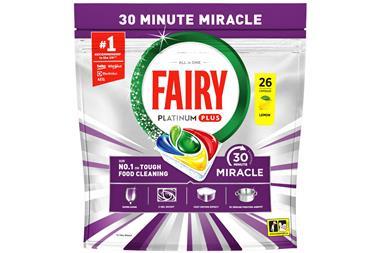National quota only undershot by the equivalent of about one day's production.
Output nearly hits quota
Fears that last year's foot and mouth disease disaster would leave the UK short of milk, and faced with the need to import milk during the winter to satisfy liquid milk demand, were finally put to rest last week.
According to the Rural Payments Agency, milk deliveries during March were the second highest for the month during the last eight years and rose 2.8% compared with last year.
This end to the milk quota year came after more than 5% of the national dairy herd were culled between February and September last year as a direct result of foot and mouth and when it was logical to expect milk output to fall broadly in line.
In practice, farmers displayed their resilience to such natural disasters with a year in which milk output exceeded year earlier levels in 11 months out of the past 12 and, in the four months to March, was even higher than two years ago.
Precise details of how close to quota the output came in the past year are not yet known. But it seems likely the national quota was only undershot by the equivalent of about one day's production.
Details have still to be finalised because farmers selling direct to the public have yet to finalise their quota returns and an adjustment also has to be made to the annual deliveries to allow for the average butterfat content of the national milk supply during the year.
Provisional figures for the latter indicate the average fat content for the year fell slightly from 4.01% to 4.00%. This decline will have added slightly to the milk volume quota.
{{CANNED GOODS }}
Close menu
- Home
- Retail & Wholesale
-
Products & Suppliers
- Back to parent navigation item
- Products & Suppliers
-
Product Categories:
- Back to parent navigation item
- Product Categories:
- Alcoholic drinks
- Bakery
- Cereals & breakfast
- Cheese
- Chicken & poultry
- Chocolate
- Confectionery
- Crisps, nuts & snacks
- Dairy
- Fish
- Fresh produce
- Frozen
- Household
- Meat
- Own Label
- Sauces & condiments
- Seasonal
- Soft drinks
- Vaping
- Vegan & plant-based
- World foods
- Suppliers
- People
- Reports & Data
-
Topics A-Z
- Back to parent navigation item
- Topics A-Z
-
Popular topics:
- Back to parent navigation item
- Popular topics:
- Cost of living crisis
- Crime
- Deposit Return Schemes
- Finance
- Government & Regulation
- Health
- Inflation
- Loyalty
- Marketing
- Mergers & Acquisitions
- New Product Development
- Sourcing
- Supply chain
- Sustainability & environment
- Technology
- Ultra Processed Foods
- Vaping
- A-Z all topics
- Content by type:
- Events
- Ask iA (beta)
- Subscribe now
Sign in to comment on this article
Not logged in before? Register for FREE guest access today.
You will be able to:
- Read more stories
- Receive daily newsletters
- Comment on stories
Advert
















No comments yet